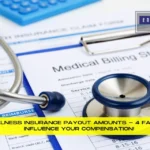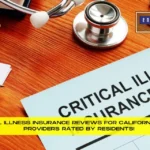Is a Charge Off Good or Bad? A charge-off is unequivocally detrimental to your financial well-being. When a lender declares an account as charged off, it signifies that they have given up hope of recovering the outstanding debt, usually following multiple missed payments. While the debt remains your responsibility, the lender writes it off as a loss on their financial statements.
Table of Contents
Here are some of the negative ramifications of having a charge-off:
- Credit Score Plummet: A charge-off is one of the most severe derogatory marks you can have on your credit report. It can substantially lower your credit score, making it difficult to qualify for new lines of credit, loans, or even rental applications.
- Future Lending Challenges: With a charge-off on your credit report, future lenders will consider you a high-risk borrower, often leading to either loan application denials or high-interest rates on approved loans.
- Collection Attempts: Even after a charge-off, your debt is usually sold to a collections agency, who will then aggressively attempt to recover the money you owe, adding another layer of stress and potential legal ramifications.
- Tax Consequences: In some cases, the charged-off amount might be considered as income, and you could be required to report it on your tax return, resulting in a potential tax liability.
- Employment Hurdles: Some employers check credit reports as part of the hiring process, particularly for positions that require financial responsibility. A charge-off could be a red flag, impacting your job prospects.
- Long-Term Effects: A charge-off stays on your credit report for seven years, meaning its negative impact will linger long after the initial financial hardship that led to the charge-off.
There’s virtually no upside to having a charge-off on your credit report. If you’re facing one, it’s crucial to explore options for its removal or mitigation to safeguard your financial future.
- For Expert Financial Insights And Guidance, You Can Visit Our Sister Site – ArabsGeek.com Now!
- Curiosity Piqued? Dive Into the Most Captivating Financial Content by Visiting Our Homepage!
- Unlock Exclusive Business Opportunities! 🚀 Connect with Us Now at our Email: [email protected]!
How Can I Pay A Charge Off
Settlement can be a complex process, but taking action to restore your credit standing is vital to progress. Here is how you should go about paying your charged-off account:
01. Locate Your Debt Holder: The first step to paying back debts is identifying who currently owns them; this could either be your original creditor or a collections agency that purchased your account from another lender. Consult your credit report for this information.
02. Contact Your Creditors or Collection Agencies: Communicate with creditors or collection agencies directly regarding outstanding balances; it is best practice to do this in writing for documentation purposes.
03. Negotiate Terms: Strive to negotiate the terms under which you’ll pay back the debt. Perhaps you can settle for less than the full amount or arrange a payment plan instead; some creditors may even agree to remove charge-offs from your credit report upon receiving payments – though this is rare.
04. Get It In Writing: Once the terms have been agreed upon, obtain a written agreement outlining all terms for payment or settlement. Don’t make any payments until this documentation has arrived in your hands.
05. Make Your Payment: According to the agreement terms, make the payment via check, money order or electronic funds transfer. Always request a receipt as payment confirmation.
Once the payment has been made and processed, review your credit report to verify the charge-off status has been updated accordingly. It may now read “Paid Charge-Off”, “Settled”, or simply removed altogether depending on what agreement was reached between yourself and creditors.
06. Dispute Any Errors: If there are discrepancies with your credit report, filing a dispute will help correct it.
07. Consulting a Financial Advisor: When faced with charge-offs, its often wise to seek professional guidance for how best to navigate payments and restore credit afterwards. Consulting with an advisor provides invaluable assistance.
Keep in mind that even after paying off a charge-off, its record will stay on your credit report for seven years from when your first missed payment led to it; however, paid or settled charge-offs tend to be seen more favorably by creditors when assessing creditworthiness.
How To Get A Charge Off Removed
Navigating the removal of a charge-off from your credit report can be tricky, but there are several methods that could potentially improve your chances. Here’s how to go about it:
- Verify the Details: Your first step should always be to check the accuracy of the charge-off listing on your credit report. Examine the amount owed, the name of the creditor, and the date of the first missed payment. Any discrepancies can be grounds for a dispute.
- File a Dispute for Errors: If you identify any inaccuracies, initiate a dispute with the credit reporting agencies (Experian, TransUnion, Equifax). Provide a detailed explanation of the errors and offer any evidence you may have to support your case. If the dispute is resolved in your favor, the charge-off could be removed.
- Negotiate Directly with the Creditor: Sometimes creditors are willing to remove a charge-off from your credit report if you agree to pay the debt. This is often known as a “pay-for-delete” agreement. Be aware that not all creditors offer this option, and it’s not universally accepted as ethical.
- Settle the Account: If a pay-for-delete arrangement isn’t possible, you might be able to negotiate a debt settlement for a reduced amount. Though this won’t erase the charge-off, your credit report will show the account as “Settled,” which is slightly less damaging than an unpaid charge-off.
- Hire a Credit Repair Service: There are agencies that specialize in credit repair and might be able to assist you in getting a charge-off removed. However, ensure that you’re working with a reputable agency, and be cautious that there are no guarantees of success.
- Seek Legal Counsel: There may be legal avenues for having a charge-off removed, especially if the creditor didn’t follow proper procedures or if the statute of limitations on the debt has expired. Consulting a legal expert can give you tailored advice on whether this route is viable for you.
- Wait for It to Age Off: If all else fails, a charge-off will automatically be removed from your credit report seven years from the date of the initial missed payment, as per the Fair Credit Reporting Act (FCRA).
- Keep Monitoring Your Credit Report: After taking any of these steps, continue to monitor your credit report to ensure that any agreed-upon changes have been made. If not, you may need to file additional disputes or contact the creditor again.
Remember, while removing a charge-off can improve your credit score, it does not absolve you of the debt (unless it’s settled or forgiven).
How Do I Get A Paid Charge Off Removed
Clearing a paid charge-off from your credit report can be an uphill battle, but it’s not impossible. Here’s how you can attempt to get a paid charge-off removed:
- Review Your Credit Report: Scrutinize the details of the charge-off listing for any inaccuracies, such as the balance, date of first delinquency, or the name of the creditor. Mistakes can be your basis for a dispute.
- Initiate a Dispute: If you find errors, you can dispute them with the credit reporting agencies—Experian, TransUnion, and Equifax. Clearly outline the inaccuracies and provide supporting evidence. A successful dispute can lead to the removal of the charge-off.
- Goodwill Letter to the Creditor: Since you’ve already paid the charge-off, the creditor might be more willing to cooperate. Send a goodwill letter asking them to remove the negative entry as a goodwill gesture. Explain any circumstances that led to the account being charged off and assure them that it was a one-time mistake.
- Negotiate a “Pay-for-Delete” After the Fact: Although uncommon, some creditors might still agree to a “pay-for-delete” agreement even after the debt has been paid. It’s not widely considered legitimate but remains a possibility.
- Consult a Credit Repair Agency: If you’re finding the process overwhelming, you may consider hiring a reputable credit repair agency. Make sure to research their effectiveness and read reviews to ensure they can handle cases like yours.
- Legal Advice: If you believe the creditor didn’t follow the correct legal process when issuing the charge-off, consult an attorney who specializes in consumer credit issues. You may have a legal basis for having the item removed.
- Persistent Follow-Up: Whichever route you choose, keep tabs on your credit report to see if the charge-off has been removed or updated. If you reach an agreement with the creditor or win a dispute, ensure that these changes are accurately reflected in your credit report.
- Time-Lapse Strategy: If other efforts fail, remember that the charge-off will automatically fall off your credit report after seven years, according to the Fair Credit Reporting Act (FCRA).
Removing a paid charge-off can be a complex and time-consuming process, but the positive impact on your credit score makes it worth the effort.
Why Is A Charge Off Still Reporting
A charge-off remaining on your credit report can be both perplexing and frustrating, especially if you believe it should have been removed by now. Here’s why a charge-off might continue to appear on your credit profile:
- Seven-Year Rule: According to the Fair Credit Reporting Act (FCRA), a charge-off can legally remain on your credit report for seven years from the date of the first missed payment that led to the charge-off status. This duration cannot be reset, even if you pay off the charge-off or settle with the creditor.
- Reporting Errors: Sometimes, errors or oversights by the creditor or credit bureaus may result in the charge-off still being reported. In such cases, you have the right to dispute the entry.
- Sold to Collections: After a charge-off, the original creditor may sell the debt to a collections agency, which can then report it as a separate entry. While the charge-off and the collection account are related, they are two distinct entries that could both appear on your report.
- Legal Issues: If there are any pending legal actions associated with the debt, such as a lawsuit or judgment, this might affect how long the charge-off stays on your report. However, the basic seven-year rule generally still applies.
- Paid but Not Removed: Paying off a charge-off doesn’t automatically remove it from your credit report. It will update the status to “Paid,” but unless you’ve negotiated a removal with the creditor, it will stay on your credit history for the full term.
- Bankruptcy Filings: If the charge-off is included in a bankruptcy filing, it should be marked as “Included in Bankruptcy” but will still adhere to the seven-year reporting duration.
- Outdated Information: It’s also possible that you’re reviewing an outdated copy of your credit report. Always ensure you’re checking the most current version.
If you find that a charge-off is still reporting after the seven-year period or believe there’s been an error, initiate a dispute with the credit bureaus to get the item removed or corrected.
How To Remove A Charge Off Without Paying
Eliminating a charge-off from your credit report without actually paying it off is a challenging task, but there are some options you might consider. Here are strategies you could explore:
- Dispute Inaccurate Information: The first step should always be to check for inaccuracies in the charge-off listing on your credit report. If you find errors, such as incorrect amounts or dates, you can file a dispute with the credit reporting agencies. If your dispute is successful, the charge-off may be removed.
- Statute of Limitations: If the debt is old, look into the statute of limitations for collecting debts in your state. Once the statute of limitations has passed, the creditor can’t legally pursue the debt, giving you leverage in negotiations.
- Negotiate with the Creditor: Reach out to the creditor and negotiate for the removal of the charge-off in exchange for not contesting it further. This is a risky strategy and not all creditors will agree. Always consult a legal advisor before attempting this.
- Goodwill Letter: If the charge-off was due to a one-time mistake or extraordinary circumstances (like medical emergencies), consider sending a goodwill letter to the creditor. Explain the situation and politely ask if they would consider removing the negative entry.
- Seek Legal Advice: In some cases, especially if you believe the creditor has not followed all proper procedures for declaring a charge-off, legal action might be a possible route. Consult a legal advisor to see if you have a case.
- Credit Repair Services: Some credit repair agencies claim they can have charge-offs removed from your credit report. However, be cautious and thoroughly vet any agency you consider using. False promises are common in the industry.
- Wait It Out: If all else fails and you’re not in a rush, a charge-off will naturally fall off your credit report after seven years from the date of the first missed payment, as mandated by the Fair Credit Reporting Act.
- Keep Monitoring: Whichever approach you choose, continuously monitor your credit report to ensure that, if successful, the charge-off has been removed.
Remember, attempting to remove a charge-off without paying could have legal implications.
How To Dispute A Charge Off
Having a charge-off on your credit report can be damaging to your financial health. If you believe that the charge-off is an error or there are inaccuracies in its reporting, disputing it is an essential step. Here’s a detailed guide on how to do just that:
Step 1: Obtain Your Credit Reports
Firstly, request a copy of your credit report from each of the three major credit bureaus — Equifax, Experian, and TransUnion. You are entitled to one free report from each bureau annually through AnnualCreditReport.com.
Step 2: Review the Charge-Off Entry
Scrutinize the charge-off entry for errors. Look for incorrect dates, amounts, or any other inaccuracies that may be present. Note down these errors as they will form the basis for your dispute.
Step 3: Gather Supporting Documentation
Compile any evidence that supports your dispute. This could include bank statements, emails, or payment records that contradict the information listed in the charge-off.
Step 4: Write a Dispute Letter
Craft a dispute letter to the credit bureau that’s reporting the inaccurate charge-off. Clearly state why the information is incorrect and what corrections are needed. Attach copies (not originals) of any supporting documentation.
Step 5: Send the Dispute Letter
Send your dispute letter via certified mail with a return receipt request. This way, you’ll have proof that the credit bureau received your dispute. Keep copies of all correspondence for your records.
Step 6: Wait for a Response
The credit bureaus typically have 30 days to investigate your dispute. They will also forward your dispute to the creditor involved. Both parties will investigate and either correct the entry or verify its accuracy.
Step 7: Review the Results
After the investigation, the credit bureau will send you the results, along with a free updated copy of your credit report if the dispute led to a change. Review it to make sure that the charge-off has been corrected or removed.
Step 8: Further Action
If your dispute is unsuccessful and you still believe that the charge-off is inaccurate, you can:
- Add a statement of dispute to your credit report.
- Engage a credit repair agency for professional assistance.
- Consult a legal advisor for potential legal recourse.
By following these steps diligently, you can navigate the complexities of disputing a charge-off on your credit report. Always consult with financial advisors or legal experts to make sure you’re taking the right actions for your individual situation.
How Bad Is A Charge Off
A charge-off on your credit report is a serious financial blemish that can significantly affect your creditworthiness. Here’s why it’s considered bad and what kind of impact it can have:
Credit Score Plunge
A charge-off is one of the most detrimental items you can have on your credit report. The immediate consequence is often a substantial drop in your credit score, which could make it harder for you to qualify for credit products, including loans and credit cards.
Higher Interest Rates
If you do manage to secure credit, the terms are likely to be less favorable. You can expect higher interest rates due to the elevated risk lenders associate with your profile.
Reduced Access to Financial Products
Banks and other financial institutions may be less likely to approve your applications for financial products, including personal loans, mortgages, or even opening a new bank account.
Employment and Housing Consequences
Some employers and landlords check credit reports as part of their decision-making process. A charge-off could impact your ability to secure a job or rent an apartment.
Collection Activity
After a charge-off, the debt is usually sold to a collection agency, who will then attempt to recover the amount owed. This adds another negative item to your credit report and can lead to annoying and, at times, aggressive collection activities, including legal action.
Emotional and Mental Strain
The presence of a charge-off and subsequent collection activity can also be emotionally draining, leading to increased stress and anxiety over financial matters.
Long-lasting Impact
The charge-off will remain on your credit report for seven years from the date of the first delinquency, making its impact long-lasting. Even if you pay the charge-off, it will still be marked as ‘Paid,’ but the history of it being charged off won’t be erased.
In summary, a charge-off is damaging on multiple fronts — it not only affects your ability to get new credit but also may impact other areas of your life, such as employment and housing. If you find yourself with a charge-off on your report, immediate corrective action, like settling the debt or disputing inaccuracies, is advisable to mitigate its long-term effects.
How To Pay To Delete A Charge Off
The “Pay for Delete” approach is a somewhat controversial tactic that involves negotiating with a creditor to remove a charge-off from your credit report in exchange for payment. While not all creditors will agree to this, and it’s not universally considered ethical, it could be an option if you’re looking to clean up your credit report. Here’s how you can go about it:
Step 1: Review Your Credit Report
Before initiating contact with the creditor, make sure you review your credit report for any inaccuracies related to the charge-off. This will give you a clearer understanding of what you’re up against.
Step 2: Know Your Rights and Obligations
Understand the legal aspects surrounding your debt, including the statute of limitations in your state. Knowing your rights will give you negotiating leverage.
Step 3: Make Initial Contact
Reach out to the creditor with a phone call to gauge their willingness to negotiate. Keep the conversation general at this point, without making any explicit offers or admissions of debt.
Step 4: Put It in Writing
If the creditor seems open to negotiations during the initial conversation, follow up with a written “Pay for Delete” letter. In this letter, outline your proposal: you’re willing to pay the debt in exchange for their agreement to remove the charge-off entry from your credit report.
Step 5: Use Certified Mail
Send your letter via certified mail with a return receipt to have proof of communication. It’s crucial to keep all records and correspondence for future reference.
Step 6: Await a Response
Creditors usually take some time to respond. If they agree to your proposal, make sure you receive this agreement in writing before making any payments.
Step 7: Make the Payment
Once the agreement is in writing, proceed with the payment according to the terms agreed upon. Keep all payment receipts and confirmations.
Step 8: Confirm Deletion
After making the payment, wait a few weeks and then check your credit report to ensure that the charge-off has been removed. If it hasn’t, follow up with the creditor with the written agreement as evidence.
Step 9: Dispute if Necessary
If the charge-off is still on your report despite the creditor agreeing to remove it, you can file a dispute with the credit bureaus, attaching copies of your agreement and payment as evidence.
Caveats and Considerations:
- Legal Grey Area: This approach resides in a legal grey area and might not be accepted by all creditors.
- Financial Advice: Always consult a financial advisor or legal expert before taking such a step to ensure it’s the right choice for your situation.
By being methodical and keeping meticulous records, the “Pay for Delete” route could potentially help you remove a charge-off from your credit report. However, proceed with caution and be aware of the ethical and legal ramifications.
Does A Charge Off Go To Collections
Yes, in most cases, a charge-off will eventually be transferred to a collections agency. When a debt is classified as a “charge-off” by a creditor, it essentially means the creditor has given up on receiving payment in a timely manner and has written off the debt as a loss in their accounting books. However, this doesn’t mean you’re off the hook for the amount owed. Here’s how it generally unfolds:
Phase 1: Pre-Charge-Off
Before classifying a debt as a charge-off, creditors usually make multiple attempts to collect the outstanding balance. This happens over a period of 180 days or about six months of non-payment.
Phase 2: Charge-Off
After the 180-day period, the creditor often writes off the debt and reports it as a charge-off to the credit bureaus. This action severely impacts your credit score and remains on your credit report for seven years.
Phase 3: Sale to Collections Agency
Post charge-off, creditors usually sell the debt to a collections agency at a discounted rate. The collections agency then takes over the task of pursuing you for the unpaid balance. The collections account is a separate entry that appears on your credit report, causing additional damage to your credit score.
Phase 4: Collections Activity
Once the collections agency takes over, they’ll start contacting you to recover the debt. You might receive phone calls, letters, and even legal notices demanding payment.
What This Means for You:
- Double Trouble: A charge-off and a collections account on your credit report can significantly lower your chances of securing credit or loans at favorable rates.
- Legal Consequences: If the collections agency is unable to recover the debt, they may file a lawsuit against you, which could lead to wage garnishment or asset seizure if they win the case.
- Negotiation Opportunities: Collections agencies often buy debts for pennies on the dollar. Because of this, they may be more willing to negotiate a settlement for less than the full amount owed. However, settling the debt won’t remove it from your credit report; it will just update the status to “Settled,” which is still a negative mark.
- Statute of Limitations: Be aware that each state has a statute of limitations for how long a debt is legally collectible. Once this period expires, the collections agency can no longer take legal action to collect the debt, although it will remain on your credit report until the seven-year mark.
In summary, a charge-off usually does lead to collections activity. If you find yourself in this situation, it’s crucial to be proactive in managing the debt to mitigate the impact on your financial health.











